What do McDonalds, Coca-Cola and Starbucks all have in common besides food ingredients? They all rank as three of the most iconic brand logos in the world, which have not only lasted the distance, but have also been permanently etched into our national psyche.
The vibrant golden arches of McDonalds, the youthful cursive script of Coca-Cola and the green siren of Starbucks prove the importance of designing quality, well thought out logos right from the beginning. Creating logos with longevity requires ongoing refinements to ensure their relevance in a modern age. Let’s take a look back at the evolution of the top ten most iconic logos.
1. WWF (World Wildlife Fund)
The WWF black and white panda has become an icon not just for WWF, but for the conservation movement as a whole. The panda was designed in 1961, inspired by Chi-Chi, a giant panda who had arrived at the London Zoo. It was originally drawn by the artist Gerald Watterson and has undergone three transformations to become what it is today.
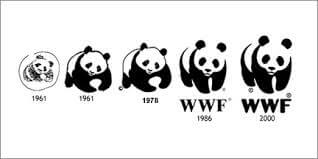
The first logo, in 1978, saw the panda simplified, yet still looking much the same. The second, and most significant, was in 1986 when it was simplified once more and WWF was included below it. Most recently, the font for WWF has changed to be softer and bolder.
This logo has the “cute” appeal working in its favour, while maintaining simplicity and modernity. It has, despite its evolutions, remained identifiably consistent over time. The use of the black and white, with the appealing, strong black eyes creates a recognisable symbol that breaks language barriers worldwide.
Image credit: http://wwf.panda.org/what_we_do/endangered_species/giant_panda/panda/panda_evolutionary_history/
2. McDonalds
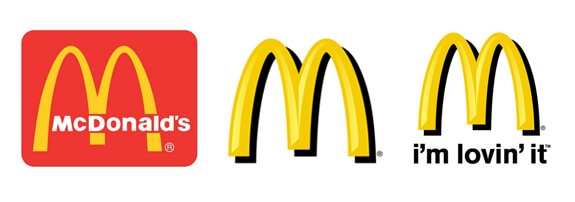
The “Golden Arches” are an easy identifier of the McDonalds brand. It is arguably, one of the best recognised brands in the world. The arches and colours have stayed consistent, with different slogans ‘I’m Lovin It’ and the name ‘McDonalds’ in different places (middle, below) over the years.
The McDonalds logo is distinctive, memorable and simple in design. The colours used (red and golden-yellow), represent boldness and power and are also known to evoke hunger according to colour psychology.
Image credit: http://www.thelogomix.com/blog/famous-logo-design-history-mcdonalds-10091737.html
3. Coca-Cola
The Coca-Cola logo is an excellent example of one that is timeless in design. This logo is one of the most recognised in the world much of this owed to its consistency.
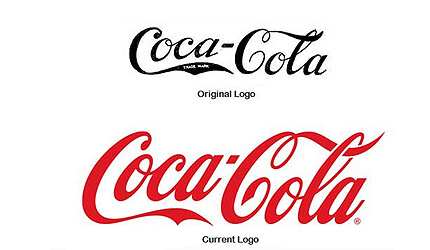
Originally designed in 1886, the basic Coca-Cola logo has persevered for the past 127 years unchanged. While this logo uses a fancier font than the others, it still manages to maintain simplicity and the contrast and boldness of the red and white make it instantly recognisable.
Image credit: http://www.famouslogos.us/coca-cola-logo/
4. Apple
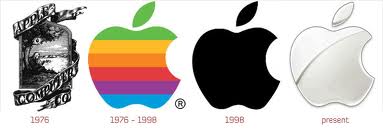
This famous icon is not the first logo that was designed for Apple. The first design was in fact a detailed drawing of Isaac Newton sitting under an apple tree, the complexity of which Steve Jobs blamed for the initial slow sale of Apple computers. This led to the design of the logo we all now know and love, which was created by Rob Janoff.
The Apple logo is again a very simple, yet memorable and identifiable logo. It works well in colour, monochrome, or with a gradient as it is often seen. While it has changed over the years to keep up-to-date and stay modern, the basic silhouette has remained the same unforgettable icon to this day.
Image credit: http://blog.conduit.com/2012/12/24/the-best-tech-logo-design-changes/
5. Nike

The ‘swoosh’ in the Nike logo is unrelated to the company’s product and purpose. However, it is instantly recognisable and versatile. It follows the general rules of simplicity, and has become an urban style icon across the globe. The one dimensional image works well in any colour, which the brand has taken advantage of. Since 1971, the word ‘Nike’ has been included and excluded, the font has changed, but the ‘swoosh’ has remained consistent and a favourite worldwide.
Image credit: http://www.thelogomix.com/blog/famous-logo-design-history-nike-10090636.html
6. Starbucks

The siren figure has been a part of the Starbucks identity since it launched in 1971. Originally, the full body of the siren was included in the logo with the company name in a circle surrounding her. However, striving for simplicity and modern appeal, the logo has evolved to simply feature her face, which is warm and inviting. Although she is female, the colour use makes the logo neither too feminine, nor too masculine.
Image credit: headstandmedia.com/starbucks-logo/
7. Google

Google’s logo was designed by a programmer rather than an artist or designer (perhaps this is the reason it breaks numerous logo design rules). It uses colours that clash, serif font and a drop shadow, which was only recently removed.
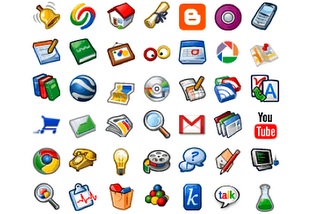 The company logo and design also filters through to the numerous applications Google owns. The other applications (i.e. Gmail, Chrome, Google+), all have an identity of their own while simultaneously reflecting the master logo by using a consistent colour palette. The Google logo is also incredibly versatile and interactive, with the homepage logo continuously updated based on themes, since 1999.
The company logo and design also filters through to the numerous applications Google owns. The other applications (i.e. Gmail, Chrome, Google+), all have an identity of their own while simultaneously reflecting the master logo by using a consistent colour palette. The Google logo is also incredibly versatile and interactive, with the homepage logo continuously updated based on themes, since 1999.
Image credits:
Google: http://www.techflavours.com/483/history-of-famous-company-logos/
8. Mercedes-Benz
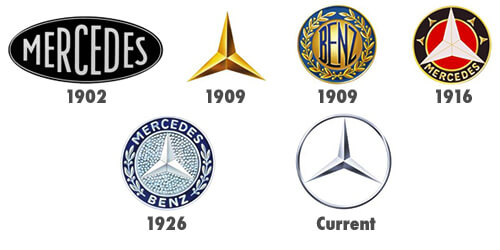
The modern version of the Mercedes Benz logo is a simple, clean three point star inside a circle. The three point star is symbolic of the brands domination of land, air and sea. The logo is silver (unless printed black), which is a colour that is typical of the brand since 1934. The original logo in 1902 contained the word Mercedes inside an oval, and over the years, it has evolved to the sleek logo that we see today. There is much consistency between the logo and the brand, as it represents the core values of Mercedes, exclusive quality and shimmering allure.
Image credit: http://www.refinedguy.com/2012/08/29/20-interesting-cases-of-logo-evolution/
9. Amazon

Amazon is again a brand that’s instantly recognisable. Not only is it simple and one dimensional, it also contains clever hidden messages. The arrow points from the A to the Z, representing the fact that they sell everything “from A to Z”. The arrow also curves down to create a smile, representing a happy shopping experience. The colours are kept simple with black, representing dominance and orange meaning happiness and pride.
Image credit: http://semiaccurate.com/2011/09/29/amazon-lights-a-fire/amazon-logo/
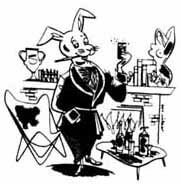 10. Playboy
10. Playboy
The bunny head has come a long way since the first logo, which was a detailed drawing of a Rabbit in a tuxedo. This was chosen for the humorous, sexual connotation and because it was frivolous and 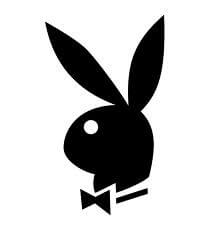 playful.
playful.
Through a clever marketing strategy however, the frivolous, adolescent idea of the rabbit was transformed into a sleek representation of style and sophistication. The rabbit head is simple, one dimensional and solid black. So distinctive in fact, that the company’s Chicago office once received a letter addressed only with the logo.
Image credits: http://www.designboom.com/portrait/playboy.html
To really create a logo with longevity it’s best to follow in the footsteps of the greats. A great logo follows the same basic design principles of functionality, individually, minimalism and symbolism. Google has of course broken some of these rules and succeeded, however, that is a very special and rare case.






